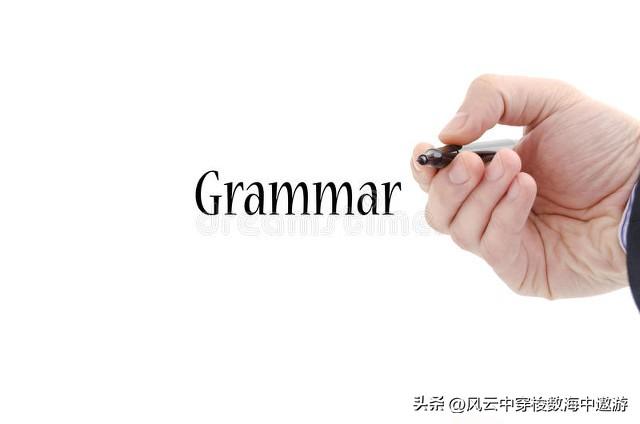
1. 什么是定语从句
定语从句也叫形容词从句。形容词从句是用来描述(修饰)名词或代词的从句。它总是一个子句。它立即出现在它所描述(修饰)的词之后。
形容词从句总是以代词或副词开头。
- 代词 who, which, that, whom, whose
- 副词: why, where, when
形容词从句回答以which, who, when或what kind开头的问题。
2. 形容词从句的例子
Example 1:
“I do feel so sorry,” said Draco Malfoy, one Potions class, “for all those people who have to stay at Hogwarts for Christmas because they’re not wanted at home.”
在这个例子中,形容词从句描述的是名词people。它给读者提供了更多关于德拉科同情的人的信息。它以代词“who”开头,回答了“Which people”这个问题。
Example 2:
“Those who cannot remember the past are condemned to repeat it.”
在这里,形容词从句描述的是代词“那些”——它给了我们更多关于那些人是谁的信息。它以代词“who”开头,“who”是从句的主语。
Example 3:
The four gas giant planets, which are Jupiter, Saturn, Neptune, and Uranus, are further away from the Sun than the rocky planets.
这个句子中的形容词从句更详细地描述了气态巨行星。它给了读者更多关于外行星的描述。从句以代词“which”开头,回答问题“which planets?”
Example 4:
The time when fish are easiest to catch is at dawn.
这个形容词从句是我们第一个以副词开头的例子。它以副词“when”开头。注意,“when”不是形容词从句的主语——“fish”才是。
3. 形容词从句的组成
形容词从句必须有每个从句都有的两个部分:主语(从句是关于什么的)和动词(主语在做什么)。形容词从句的主语取决于它是以代词还是副词开头的。
a. 代词开头的定语从句
当形容词从句以代词开头时,代词是从句的主语。
Example 1:
The man who owns Curious George wears a yellow hat.
在这个例子中,“who”是代词,也是形容词从句的主语。这个从句描述了“man”,它是主句“The man wears a yellow hat”的主语。“owns”是动词,因为这是“who”正在做的动作。
Example 2:
The dog that performs the most tricks will win the prize.
这个形容词从句的主语是that,这个从句修饰了dog这个词。这里的动词是“perform”,因为那就是主语“that”正在做的事情。
b. 以副词开头的定语从句
当形容词从句以副词开头时,副词后面的名词或代词是主语。
Example 1:
The restaurant where they serve fried zucchini is my favorite.
这个形容词从句以副词(where)开头。从句的主语是代词“they”。动词是serve,形容词从句描述的是餐厅。
Example 2:
Do you remember that time when we saw an eagle flying?
副词“when”以这个形容词从句开头。从句的主语是“we”,动词是“saw看见”,形容词从句描述的是“time”。从句回答了“什么时候?”
4. 定语从句的种类
形容词从句有两种:限制性从句和非限制性从句。
- 限制性从句是指限制或限制它所修饰的名词或代词的从句。它使名词或代词更具体。限制性从句包含对句子意义至关重要的信息。
Example 1
People who are rude are difficult to be around.
这个形容词从句是限制性的。它限制了“people”这个主题所涉及的人的类型。这句话不是针对所有人,而是针对有限的一群人:那些粗鲁的人。如果去掉这个形容词从句,这个句子的意思就大不相同了。
Example 2
The button that is on top turns on the machine.
这个形容词从句是限制性的。它限制了名词“按钮”——它让读者知道哪个按钮正在被识别。如果有几个按钮,而读者想知道使用哪个按钮,这将是有用的。如果去掉这一子句,读者将不知道如何启动机器。
b.非限制性从句不限制它所修饰的名词或代词;相反,它提供了一些额外的信息。非限制性从句对句子的意思并不是必不可少的,但可以增加一些额外的细节。
Example 1
My brother, who is sometimes rude to guests, lives down the street from me.
这个形容词从句是非限制性的。它增加了关于“我的兄弟”的额外信息。如果去掉这个形容词从句,句子的主要意思还是一样的。
Example 2:
The button, which is green, is at the top of the row.
这里的形容词从句是非限制性的——它不会以任何方式限制“按钮”。相反,它增加了一些额外的信息。如果去掉这个从句,读者仍然知道这个句子指的是哪个按钮。
